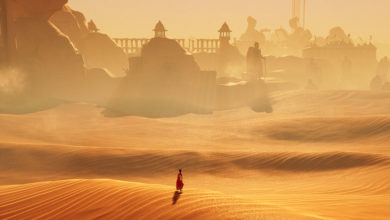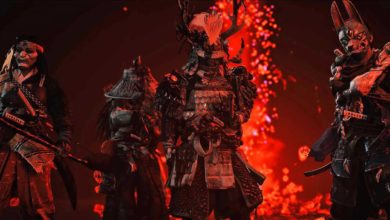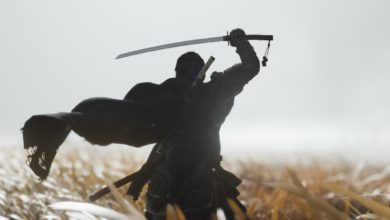Apart from its setting, Ghost of Tsushima (GOT) is the kind of open-world game that looks fairly standard on paper. You could call it ‘The Witcher with Samurais’, or ‘Assassin’s Creed in Japan’, and it would give you a vague understanding of what the game’s about. But neither statement would do this game justice. While Ghost of Tsushima borrows heavily from other well-known games in the open-world genre, it successfully manages to distinguish itself from the crowd with its stunning rendition of feudal Japan, challenging combat and drop dead gorgeous visuals that look like a painting come to life.
Ghost of Tsushima takes place on the Japanese island of Tsushima in the 13th century. You play as Jin Sakai, an honourable Samurai who strives to protect his land against the ruthless invading Mongol horde. Sadly the Mongol use tactics that the Samurai aren’t well prepared for, and so Jin must adapt his ways to face the treacherous foe. Jin’s transition from honourable Samurai to sneaky ninja dude is what the game is largely about, and for most of the part, it works. You understand the toll this transformation is taking on him, as he has to unlearn his more honourable ways to deal with cunning enemies that don’t play fair.
The honourable samurai
This dichotomy plays into gameplay too. Ghost of Tsushima can largely be played as an honourable Samurai, or as someone who gets the drop on his enemies from the shadows using certain underhand tactics. Or you could play a mix of both depending on the situation really. As a Samurai, gameplay feels like a toned down version of Sekiro, where combat – at least at first, is fairly challenging even with smaller groups of enemies. You can block attacks, parry them and then quickly follow up with a counter attack to swiftly deal with your foe. Heavy attacks will need to be completely avoided at first, but later on, you’ll be able to unlock upgrades that will allow you to parry those as well.
As a Samurai, your skill tree will also be a bit different, offering aggressive abilities that allow you to deal with different kinds of enemies, or bigger groups of enemies. The combat becomes a bit tricky when foes wielding different weapons are introduced as a parry for a swordsman will not work with one wielding a spear. This is where stances come into play. Ghost of Tsushima has a total of four stances that can deal with all sorts of enemies. You’ll have to learn to change them on the fly during battle to effectively deal with all sorts of attacks. This takes some getting used to, but by the end of the first act, you should be well equipped to deal with most combat encounters. Another insanely cool Samurai perk is that you can challenge enemies to a Showdown before they spot you. This is a mini-QTE-driven game of sorts where Jin can cut through multiple enemies using his sword as long as you press the right button at the right time. Miss an attack and you’ll take more damage than normal, leaving you vulnerable against a large group.
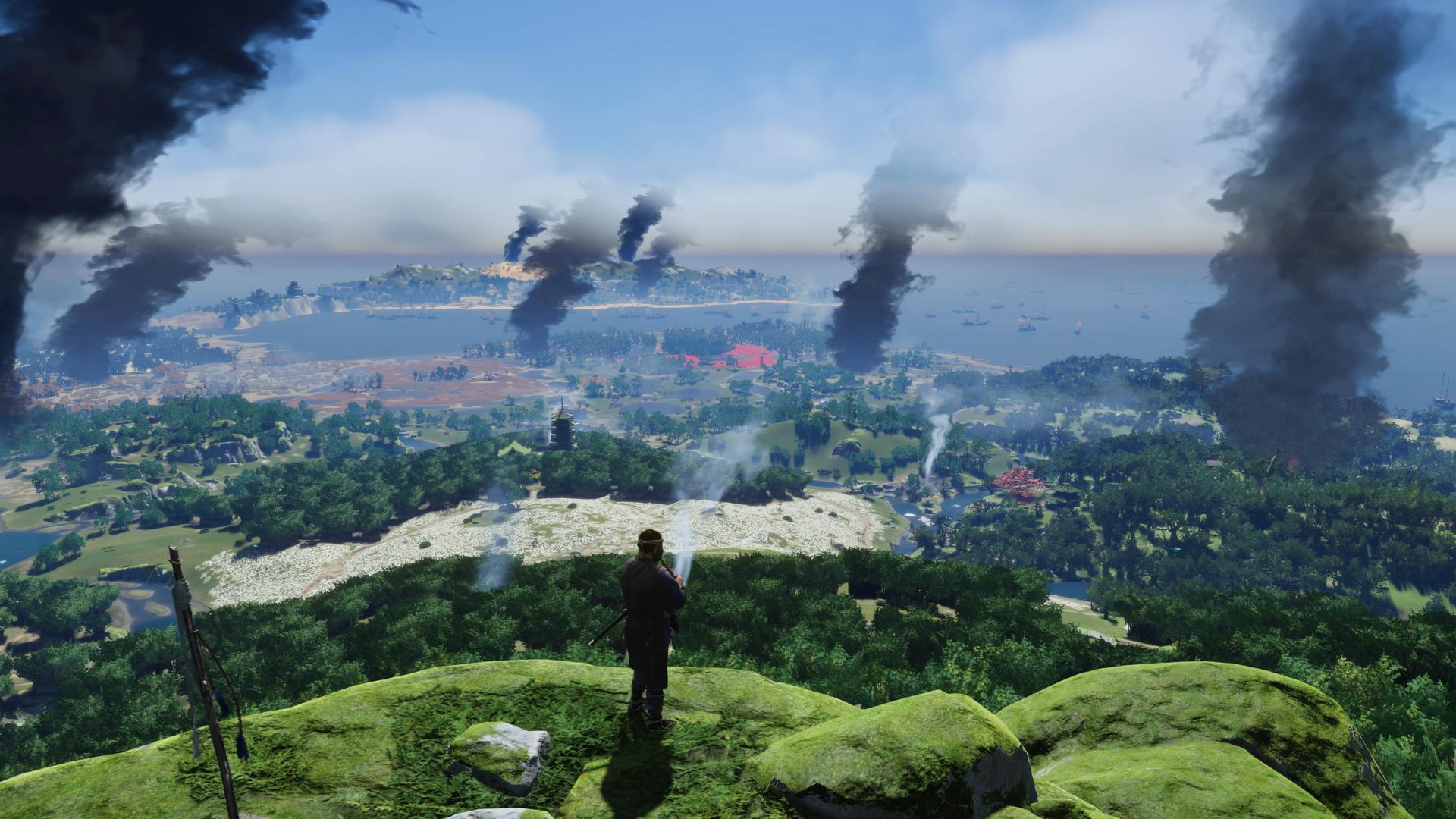
A ghost in the shadows
As the Ghost, Jin can employ stealth tactics to get the job done. Stealth in Ghost of Tsushima is nothing revolutionary; in fact in many cases, it’s almost too easy to trick the AI since they aren’t the smartest tools in the shed. Jin has a diverse arsenal than can help him out in stealth mode as well. He can chain together takedowns to take out up to three enemies swiftly and quietly. He can use arrows to silently snipe them from a distance, or use a hallucinogenic dart to turn them against one another. And if your Sam Fisher approach goes horribly wrong, he also has access to some Ghost weapons to get him out of immediate danger. He can throw down a smoke bomb to quickly disappear, or go loud by taking out a bunch of enemies with a well timed sticky bomb.
To be honest, none of Ghost of Tsushima’s gameplay elements are particularly unique, but it’s the way they all flow together is what makes this game such a blast to play. Killing every enemy in a camp silently is just as satisfying as cutting them all down with your Katana. You could even experiment with different builds as Jin will gain access to armour sets that bring about certain perks like increased health, or being able to stay stealthy for a longer period of time. Tie these in with charms – that provide both active and passive builds during combat, and you have a flexible system that allows for a lot of experimentation.
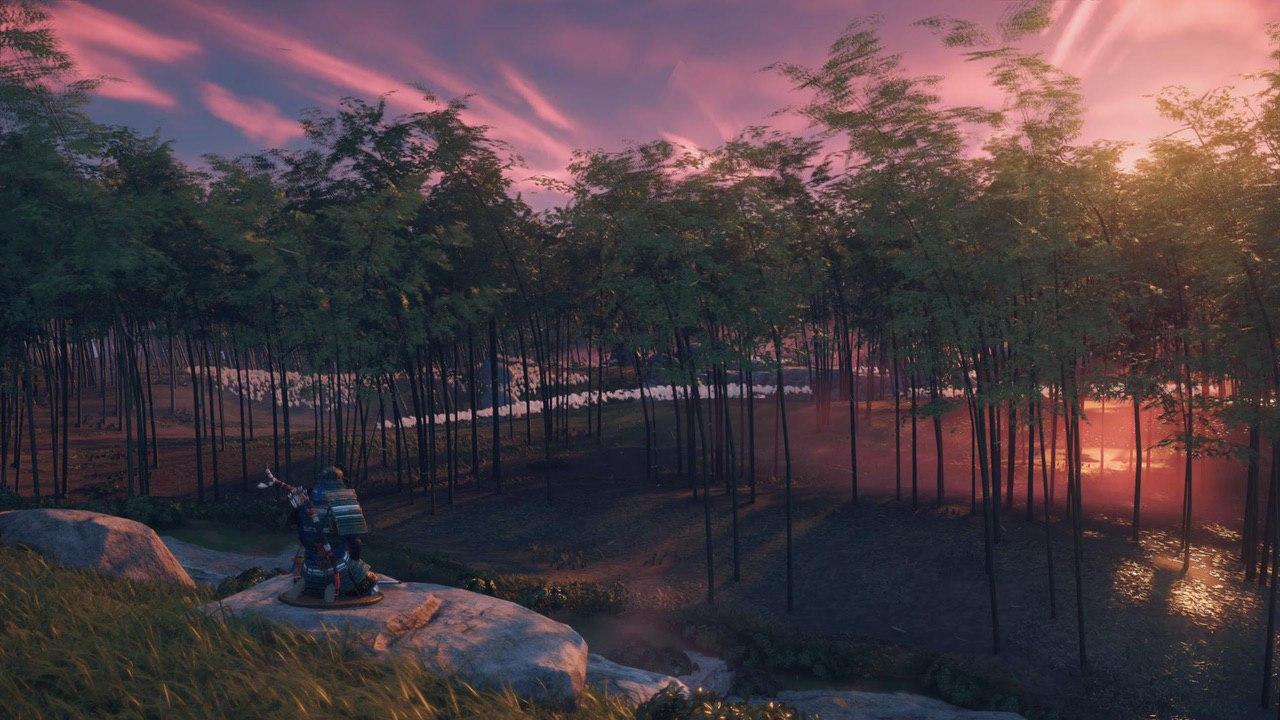
While gameplay in Ghost of Tsushima is satisfying, mission structure and open world activities are standard fare – and can get a bit repetitive. Sure, it’s not as cluttered as the newer Assassin’s Creed games, but there is still a lot of filler content that may cause some players to get burnt out. While some of these offer tangible rewards like rare materials (to upgrade gear) or unique charms, a lot of them are pretty copy paste affairs. You’ll be tracking down fox dens, rescuing farmers from Mongols, killing lots of bandits and/or tracking people down and then killing them. The main missions – though grander in nature, largely follow the same template as well. So unless you’re really invested in the lore or certain characters, your map clearing OCD may cause you to burn out.
Let the wind be your guide
While Ghost of Tsushima’s quest structure may not win it any awards, its in-game UI is the best I’ve seen in an open world game till date. It’s so refreshing to see a game of this magnitude not be littered by icons, or bright lines directing you to your next objective. In Ghost of Tsushima, the wind guides you to your next objective. It’s subtle, and is an amazing way of making you more invested in your surroundings. Once you mark your objective, look at the direction in which leaves or grass blows and that’s the path you need to follow. Birds and foxes will highlight special points of interest, and following them will lead to a cosmetic reward or a charm. Stacks of smoke will denote a village in need of your services, or a refreshing hot spring where you can rest – and permanently increase your health.
Ghost of Tsushima doesn’t reinvent the open world genre, but it definitely gets a lot of things right. Even when I got bored of some of the side quests, I would get distracted by just how absurdly good this game looks, and would start snapping up pictures in Ghost of Tsushima’s robust photo mode. And as you can see by some of my amateur screenshots, this is probably one of the best looking open world games we’ve ever played till date. Sure, it’s not as polished as The Last of Us Part 2, and does offer up some glitches at times, but it’s still one of the open worlds well worth investing in.

